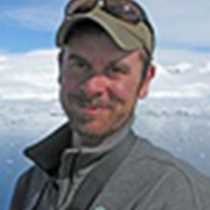San Juan Islands & Friday Harbor
Our final day at sea, our final day in Canadian waters and finally a sunrise to rememer! To top off an expedition defined by dramatic, unpredictable weather, this morning dawned a bruised shade of purple with a waning moon on its horizon. I sat on the bridge with our Captain in the early light and he, in his concise way, summarized the day’s outcome well: “It is going to be a fine day.”
And so it was, with the preamble being not only the sunrise but a warm breeze and signs of clear, dry weather on the rise. Crossing over into United States waters we entered the San Juan Archipelago.
The archipelago is split into two groups of islands. The San Juan Islands are part of Washington State, while the Gulf Islands are part of the Canadian province of British Columbia. At high tide, the level the sea needs to be at when determining official land mass, there are more than 450 islands comprising the archipelago. With less than one-sixth of the islands permanently inhabited, two of these were of particular note concerning today’s activities.
After leaving the Gulf Island archipelago and Canadian waters for good, we took a close look at the dry eastern exposure of Spieden Island. Despite the San Juan’s reputation for cool, damp conditions, this lee-facing part of the island is defined by dry, shrubby flora and a peppering of glacial erratics left from the last ice age. Additionally, our tight southbound pass along the island revealed a population of Mouflon (Ovis orientalis), an introduced subspecies of the wild sheep. In the 1970's the island was used for big game hunting, thus the reason for such an exotic sight in such extreme northwest terraine. Hunting was banned on the island after the 1970’s due to the close proximity of other inhabited islands. Good thinking!
Continuing southwest, we made our way towards Friday Harbor located on San Juan Island. This small island town offered guests and crew alike a chance to stroll, shop and sample the local fare all while basking in the splendor of a climactic high pressure system!
For me, the real magic of the town was found beneath the local sailboats and between the harbor pilings. Mere steps from the ship we came across what turns out to be two scientists’ inspiration for the 2008 Nobel Prize in Chemistry.
Osamu Shimomura and Roger Y. Tsien were awarded the prize on October 10th of that year for their discovery and development of a green fluorescent protein found within the jelly fish floating beneath our very feet. Aequorea victoria, also called the Crystal jelly, is a bioluminescent hydrozoan jellyfish (also known as hydromedusae). By isolating the jellies bioluminecent protein aequorin, Shimomura discovered a most important biological research tool that has sine been used in the development of biosensors and other scientific applications.
With Friday Harbor behind us, our travels continued south into our final sunset and an evening deserving of such a well balanced trip.




